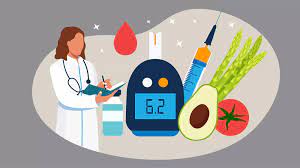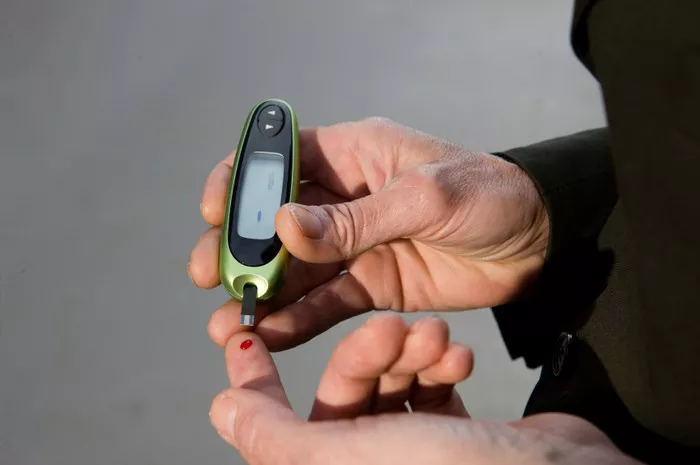Hypoglycemia, or low blood sugar, is a condition that occurs when blood glucose levels drop below normal. This can lead to a variety of symptoms, including dizziness, sweating, confusion, and even loss of consciousness if not treated promptly. While hypoglycemia can affect anyone, certain individuals are at a higher risk due to various factors. This article will explore who is most at risk of hypoglycemia, the underlying causes, and preventive measures to help manage and reduce the risk of experiencing low blood sugar.
Understanding Hypoglycemia
What is Hypoglycemia?
Hypoglycemia is defined as a blood glucose level that falls below 70 mg/dL (3.9 mmol/L). The condition can arise suddenly and may be life-threatening if not addressed. It is particularly important for individuals with diabetes to monitor their blood sugar levels closely to prevent hypoglycemic episodes.
Symptoms of Hypoglycemia
The symptoms of hypoglycemia can vary in severity and may include:
Mild Symptoms: Shakiness, sweating, dizziness, irritability, increased heart rate, and hunger.
Moderate Symptoms: Confusion, difficulty concentrating, blurred vision, and fatigue.
Severe Symptoms: Loss of consciousness, seizures, or coma.
Understanding these symptoms is crucial for timely intervention, especially for those at higher risk.
Who Is Most at Risk of Hypoglycemia?
1. Individuals with Diabetes
Individuals with diabetes, especially those using insulin or certain oral medications, are at the highest risk for hypoglycemia. This group includes:
Type 1 Diabetes: People with type 1 diabetes are particularly vulnerable because their bodies do not produce insulin. As a result, they rely on insulin injections or pumps to control their blood sugar levels. An overdose of insulin or miscalculation in carbohydrate intake can easily lead to hypoglycemia.
Type 2 Diabetes: While people with type 2 diabetes may produce some insulin, they often require medications to help manage their blood sugar levels. Some of these medications, particularly sulfonylureas and meglitinides, can increase the risk of hypoglycemia, especially if taken without food or inappropriately dosed.
2. Individuals on Insulin Therapy
Regardless of the type of diabetes, anyone using insulin is at risk of hypoglycemia. Factors that can contribute to this risk include:
Incorrect Dosing: Taking too much insulin or miscalculating the dosage based on food intake.
Changes in Routine: Altering exercise routines without adjusting insulin doses can lead to low blood sugar levels. Increased physical activity can enhance insulin sensitivity, which may lower blood sugar levels more than expected.
Skipping Meals: Individuals who skip meals or delay eating after taking insulin are more likely to experience hypoglycemia.
3. Older Adults
Older adults are more susceptible to hypoglycemia for several reasons:
Age-Related Physiological Changes: As people age, their bodies may respond differently to medications, including insulin. The renal function may decline, affecting how insulin and other medications are metabolized.
Cognitive Impairment: Older adults may experience cognitive decline, making it more challenging to recognize the early symptoms of hypoglycemia.
Multiple Medications: Older adults often take several medications for various conditions, increasing the likelihood of drug interactions that can exacerbate hypoglycemia.
4. Pregnant Women
Pregnant women, particularly those with gestational diabetes or preexisting diabetes, may experience hypoglycemia for the following reasons:
Increased Insulin Sensitivity: During pregnancy, the body becomes more sensitive to insulin, which can lead to lower blood sugar levels.
Dietary Changes: Changes in dietary habits or irregular eating patterns can contribute to hypoglycemic episodes.
Physical Activity: Increased physical activity during pregnancy, coupled with insulin therapy, can raise the risk of low blood sugar.
5. Individuals with Certain Medical Conditions
Several medical conditions can increase the risk of hypoglycemia:
Adrenal Insufficiency: This condition occurs when the adrenal glands do not produce enough cortisol, a hormone that helps regulate blood sugar levels. Individuals with adrenal insufficiency may experience hypoglycemia more frequently.
Liver Disease: The liver plays a crucial role in glucose metabolism. Conditions such as cirrhosis or hepatitis can impair the liver’s ability to release glucose into the bloodstream, leading to low blood sugar levels.
Kidney Disease: Impaired kidney function can affect the clearance of insulin from the body, increasing the risk of hypoglycemia, especially in individuals on insulin therapy.
Gastrointestinal Disorders: Conditions like gastroparesis, which delays stomach emptying, can lead to unpredictable absorption of nutrients, increasing the risk of hypoglycemia.
6. Individuals with Hormonal Disorders
Hormonal imbalances can also contribute to the risk of hypoglycemia:
Hypopituitarism: This condition results in decreased production of hormones from the pituitary gland, affecting the body’s ability to regulate blood sugar levels.
Growth Hormone Deficiency: Low levels of growth hormone can impair glucose metabolism, increasing the risk of low blood sugar.
7. Individuals with a History of Hypoglycemia
People who have previously experienced hypoglycemia may develop a hypoglycemia unawareness condition. This means they may not recognize the early warning signs of low blood sugar, making them more vulnerable to severe hypoglycemic episodes.
8. Athletes and Highly Active Individuals
While exercise is generally beneficial, certain individuals may experience hypoglycemia due to physical activity:
Endurance Athletes: Athletes engaged in prolonged, high-intensity exercise may experience hypoglycemia, particularly if they do not adequately fuel their bodies before and after workouts.
Individuals with Diabetes: Athletes with diabetes must carefully monitor their blood sugar levels and adjust their insulin and carbohydrate intake to avoid hypoglycemic episodes during physical activity.
Preventive Measures for High-Risk Individuals
Preventing hypoglycemia involves a combination of lifestyle changes, education, and medical management. Here are some effective strategies:
1. Regular Monitoring of Blood Sugar Levels
Frequent Testing: Individuals at risk should regularly check their blood sugar levels, particularly before and after meals, exercise, and during periods of illness.
Continuous Glucose Monitoring (CGM): For those with diabetes, using a CGM can provide real-time data on blood sugar levels, allowing for quicker adjustments to insulin and dietary intake.
2. Education and Awareness
Understanding Symptoms: Individuals should educate themselves on the symptoms of hypoglycemia and recognize early warning signs.
Training for Family and Friends: Educating family members and friends about the signs of hypoglycemia can help ensure prompt assistance during an episode.
3. Dietary Management
Balanced Meals: Consuming balanced meals that include carbohydrates, proteins, and healthy fats can help stabilize blood sugar levels.
Frequent, Small Meals: Eating small meals or snacks throughout the day can prevent drastic fluctuations in blood sugar levels.
Carbohydrate Counting: Individuals with diabetes can benefit from learning to count carbohydrates to better manage their insulin doses.
4. Adjusting Medication and Insulin Doses
Consulting Healthcare Providers: Individuals should work closely with healthcare providers to adjust insulin and medication dosages based on their lifestyle, diet, and exercise routine.
Understanding Medication Side Effects: Being aware of medications that increase the risk of hypoglycemia can help individuals take proactive measures.
5. Physical Activity Considerations
Exercise Planning: Individuals, especially athletes and those with diabetes, should plan their exercise routines carefully. Monitoring blood sugar before, during, and after exercise is essential.
Carbohydrate Intake: Consuming carbohydrates before and after workouts can help prevent hypoglycemia during physical activity.
6. Emergency Preparedness
Carrying Quick Sources of Sugar: Individuals should always carry quick sources of sugar, such as glucose tablets, candy, or fruit juice, to address hypoglycemic episodes promptly.
Medical ID: Wearing a medical ID bracelet or necklace indicating diabetes or the risk of hypoglycemia can help others provide assistance in emergencies.
7. Regular Medical Check-Ups
Routine Evaluations: Regular check-ups with healthcare providers can help monitor blood sugar levels, medication effectiveness, and overall health.
Screening for Comorbidities: Individuals should be screened for conditions that may increase the risk of hypoglycemia, such as kidney or liver disease.
See also: Why Do I Have Reactive Hypoglycemia?
Conclusion
Hypoglycemia is a serious condition that requires awareness and proactive management. Certain individuals are at a higher risk of experiencing low blood sugar, including those with diabetes, older adults, pregnant women, and individuals with specific medical conditions. Recognizing the symptoms of hypoglycemia and implementing preventive measures can help mitigate the risks associated with this condition. By maintaining regular monitoring, adjusting dietary habits, and collaborating with healthcare providers, individuals can effectively manage their blood sugar levels and reduce the likelihood of hypoglycemic episodes. Understanding who is most at risk is the first step toward better management and improved health outcomes.
Related topics:
What is Non-Diabetic Hypoglycemia?



























